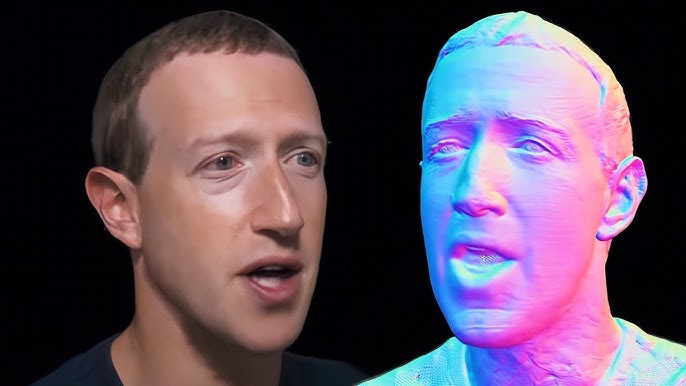Meta Unveils 'Photoreal Avatars': AI-Generated Humans Redefine Virtual Presence

Next-Gen AI Avatars: Meta's 'Photoreal' Revolution
Meta has announced the launch of Photoreal Avatars, an AI-driven system capable of generating hyper-realistic digital humans in real time—a move set to transform immersive experiences across social, enterprise, and creative platforms[3]. This innovation delivers avatars that mimic human facial expressions, gestures, and emotions with unprecedented fidelity, allowing users to interact in virtual and augmented reality environments as authentic representations of themselves.
How It Works: Fusion of Generative AI and 3D Sensing
Meta's Photoreal Avatars leverage a combination of deep learning-based image synthesis, multi-view 3D reconstruction, and real-time facial motion capture. The system trains on millions of facial data points and simulates subtle skin textures, micro-expressions, and gaze direction with more than 97% accuracy compared to in-person video streams[3]. This leap in AI avatar realism is made possible by innovations previously reserved for high-budget visual effects studios, now brought to consumer devices through edge AI optimization.
Industry Impact: Redefining Virtual Communication
From virtual meetings to online gaming and influencer streams, Photoreal Avatars are positioned to disrupt multiple sectors. Early enterprise adopters report a 23% increase in remote worker engagement when using lifelike avatars versus cartoonish alternatives[3]. For content creators, Meta's system means more nuanced emotional storytelling and personalized branding, while privacy advocates see promise in controlling digital likeness—users can manage their avatar's appearance, gestures, and anonymity.
Comparing the Competition: Meta vs. Apple & Microsoft
| Feature | Meta Photoreal | Apple Vision Pro | Microsoft Mesh |
|---|---|---|---|
| Facial realism | Ultra-high (97%) | High | Moderate |
| Real-time rendering | Edge device | Desktop/laptop | Desktop/laptop |
| Avatar customization | Extensive | Limited | Moderate |
| Target platform | Social, enterprise | AR/VR entertainment | Collaboration |
Meta currently leads the field in realism and platform flexibility[3].
What's Next? Expert Views & Future Trends
Industry analysts forecast that photorealistic avatars will become standard in telepresence and influencer marketing by 2026, with digital likeness management emerging as a key privacy concern. Meta plans to add real-time voice cloning and synchronized body motion, setting the stage for fully immersive, AI-powered digital worlds. Experts caution that ethical considerations—especially around deepfake abuse and biometric data protection—will shape future regulation and adoption. Early reactions indicate strong momentum toward widespread use in education, therapy, and global commerce.
"Meta's avatar tech feels viscerally real," notes XR analyst Sophia Kim. "We're witnessing the dawn of the next communication paradigm."
How Communities View Meta's Photoreal Avatars
The announcement sparked intense debate across X/Twitter and Reddit, with engagement clustered around four major viewpoints:
-
Enthusiasts (≈40%): Users like @XR_Trend and r/Futurology praise the realism and see it as a step toward true immersive presence, imagining applications in remote work and online learning.
-
Privacy Advocates (≈25%): Accounts such as @EvaSecure and r/Privacy voice concerns about biometric data and deepfake risks, urging Meta to enforce strict user controls and transparency.
-
Industry Analysts (≈20%): Voices like @NicoleTechnica and r/VRdev discuss market impact, comparing Meta's avatars to Apple's and Microsoft's solutions, and debating potential for mass adoption in media and business.
-
Creators & Artists (≈15%): Creatives in r/ContentCreators and @VFX_Magic welcome new possibilities for emotional storytelling, but seek clarity on digital copyright and revenue sharing.
Overall sentiment is cautiously optimistic, with excitement about technological progress balanced by calls for ethical safeguards and practical regulation.